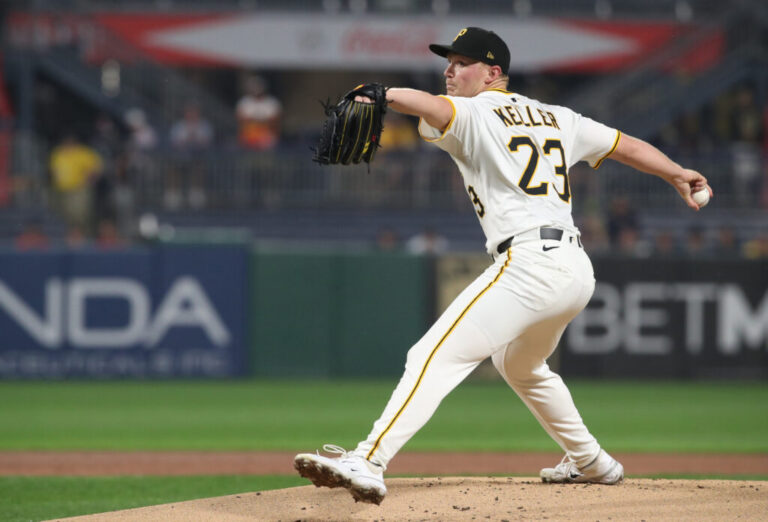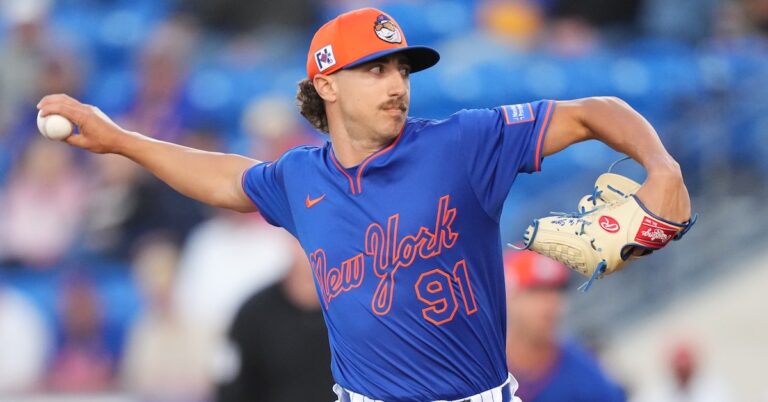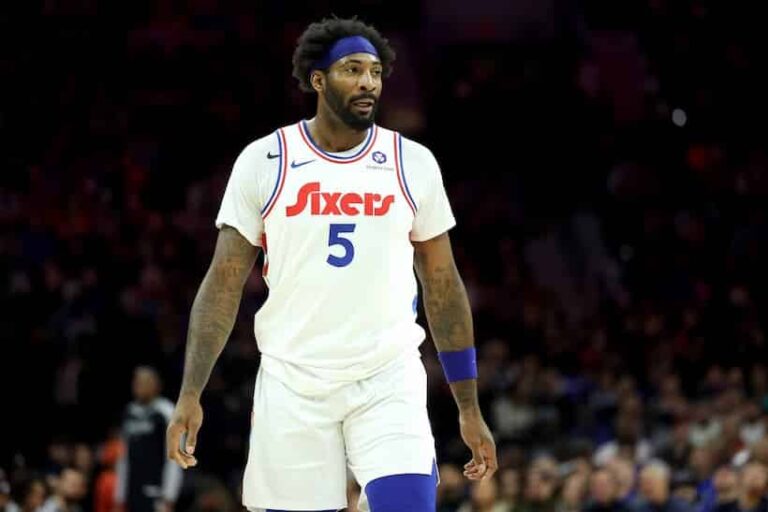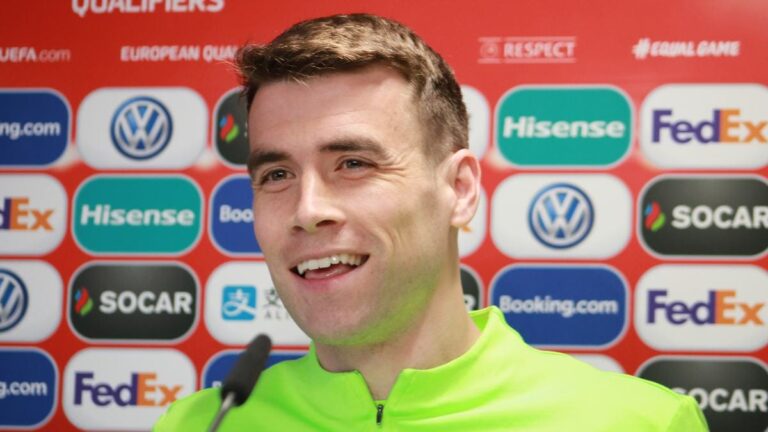

It’s a bit of a cliché that all-time great basketball players like to add an element to their game every offseason. You come back from summer vacation and Tim Duncan has a new post move or LeBron’s shooting three-pointers now. This truism informs something I like to ask baseball players during breakout seasons: Do you have an eye on the next thing you want to learn? Sometimes you get some banality about being more consistent, or just an outright “no,” but on occasion a pitcher will reveal a hitherto hidden desire to learn a palmball, so it’s worth asking.
Nobody has embodied this drive for self-improvement like Shohei Ohtani. The man who already does everything showed up at the start of 2024 and decided to turn his plus running speed from a curiosity into a weapon. Shotime had previously topped out in the 20-steal range, and usually with pretty ugly success rates. In 2022, he needed 20 attempts to swipe just 11 bags; that year, he also stole the George Springer Trophy for Most Mystifyingly Bad Basestealer for a Fast Guy.
In 2024, Ohtani set new career highs in batting average, home runs, runs scored, RBI, and wRC+; he also swallowed Rickey Henderson and stole his powers. Ohtani more than doubled his previous career high in stolen bases with 59, and in just 63 attempts.
In 2025, Ohtani will return to the mound for the first time in more than a year, but that doesn’t mean he can’t add yet another element to his game.
Ohtani’s 2024 MVP campaign was all the more impressive because he did not use his two-way ability, which is the very attribute that turned him into one of the world’s most celebrated athletes. Just playing on one side of the ball, he put up a highly MVP-worthy 9.1 WAR, and he did it despite shipping back more than 17 runs’ worth of defensive value.
Because Ohtani played so much, and exclusively at DH, he finished in the bottom 10 in defensive value out of the more than 1,400 players who appeared in the majors last season. And honestly, I think that’s unbecoming for a star of his caliber. It’s time for Ohtani to stop mooching off his buddies and pick up a glove. He’s been riding his teammates’ coattails, spending half the game chomping blissfully away on sunflower seeds and whatnot, for far too long.
It’s time for Ohtani to earn his keep in center field.
Why not? The two things a center fielder needs to be able to do are run and throw. Ohtani can run — he just stole 59 bases, remember? — and he can definitely throw. The last time Ohtani pitched regularly, his four-seamer averaged 96.8 mph off the mound, and he’s hit 100 mph 75 times in his major league career. I figure he can probably let it rip on a crow-hop from center.
According to Baseball Savant, Ohtani’s sprint speed — 28.1 feet per second in 2024 — is merely plus, rather than elite. But combine that with his arm strength and you’re on to something. In 2024, only five center fielders who matched Ohtani’s sprint speed also put up an outfield arm strength score of 93.0 mph or better on the Baseball Savant leaderboard.
Three of those players — Kevin Kiermaier, Brenton Doyle, and Pete Crow-Armstrong — are elite center fielders. (Or “were,” in Kiermaier’s case. Best wishes on your retirement, Kev.) A fourth, Jose Siri, is baseball’s Adama Traoré or Darrius Heyward-Bey, and the Mets’ David Stearns is the latest head of baseball ops to believe that he can unlock the potential in Siri’s world-class athleticism. And to be fair, Siri had a great defensive season in 2024. (Player no. 5 is Giants rookie Grant McCray. I have no pithy commentary about him.)
Physically, there’s no reason why Ohtani couldn’t play center field. But what does the tape say? Earlier this week, I made a crack about how he probably doesn’t even own a glove, but obviously that’s not true. Ohtani has thrown nearly 500 innings off major league mounds in his career, and they do encourage pitchers to wear a mitt.
For that matter, in 2021, Ohtani did make his way out to the outfield for 8 1/3 innings, but he didn’t have to make a play the whole time he was out there. In this respect alone, Ohtani and I are alike. My Little League coaches also preferred to keep me on the bench, and on the rare occasions in which they were forced to send me out to the field, they stuck me out in right and prayed that nobody hit the ball my way.
But I digress.
Ohtani’s never had to field the ball in the outfield, but he has had to defend his position at pitcher. Just not that much.
According to Baseball Savant, Ohtani has had just 42 balls hit to him in his entire major league career. That doesn’t seem like very many. It’s like one every other start. Now, I thought that this was an artifact of Ohtani getting a lot of strikeouts and fly balls — he’s nearly as unlike Logan Webb on the mound as he is in the batter’s box. Maybe he’s some outlier, or he’s under instructions not to overexert himself by lunging after balls hit over the mound.
Well, those 42 fielding opportunities — not counting covering first base or backing up third or home — represent some 3.7% of all the balls in play Ohtani has allowed in his career. Since Ohtani debuted in 2018, 626 pitchers have allowed 400 or more balls in play in regular season action. And Ohtani is almost exactly in the middle — 317th in the percentage of balls in play hit to the pitcher.
We do get some fun outliers. Brusdar Graterol is far and away no. 1, at 9.4%. On the other end is Sean Doolittle, who had just two balls hit to him out of 454 total balls in play during that time period. What a waste, since Doolittle used to be a first baseman and presumably knows how to play defense.
Anyway, 42 plays… that’s not a lot. In fact, it’s in that magic zone where it’s small enough for me to watch every single one in less than an hour, but big enough that I can try to draw some conclusions from the data.
So that’s what I did. I watched every ball that’s been hit to Ohtani since 2018, and coded them into one of several categories. Now, if I took that coding data to Sports Info Solutions, they’d send me to my room without supper. A schema that includes categories like “looks like he’s chasing a kitten” is only so useful. But there were indeed five plays that fit that description. Here’s one.
See what I mean? You’ve got to shuffle over and surround the little varmint and scoop it up before it wriggles away.
But most of the time, Ohtani didn’t even have to do that much. Half of his fielding chances were soft one- or multi-hoppers that came off pitches the batter smashed straight into the ground in front of home plate. I know I just said I was a horrendous Little League defender, but I genuinely think I could have made most of these plays myself. Here’s a representative example.
So Ohtani’s a great athlete, and a competent defensive pitcher. Does that mean he’s suited to the outfield? I’ll answer that question thusly: I had to update my coding methodology halfway through.
I started noticing a common thread when Ohtani had more to do than scoop up a Baltimore chop. He looked frantic, even by the standards of the life-and-death reflexive motions required to field a sharp comebacker. I thought he was getting Charlie Browned — you know, in those Peanuts panels where Charlie Brown gives up a line drive that comes back through the box so fast it knocks his clothes off.
But that wasn’t quite right.
Five years ago, Craig Goldstein — the Baseball Prospectus editor-in-chief and a close friend of mine, if “friendship” can be understood to mean “years of unrelenting mutual annoyance” — produced a groundbreaking sliver of baseball insight: “Dustin May running after a foul ball has extreme Waluigi energy.”
(You know Waluigi, the chaotic all-elbows-and-knees Nintendo character.) Ohtani, at least as a defender, has Waluigi energy too. What does that mean? Well, behold this routine 1-5-3 groundout.
Or this smattering of still images from various plays Ohtani has made over the years.

Whoops!

Whee!

Clang!

All right, that last one bounced off Ohtani for a single. So he doesn’t always make the out.
This is a staggeringly gifted athlete, capable of feats of balance and body control you or I could barely fathom. But when he fields his position — even when he makes the play — Ohtani sometimes moves like a newborn wildebeest. And that’s not really the vibe you want to take into the outfield, where there’s all manner of stuff to run into.
Center field can be a treacherous land even for skilled operators. I can’t watch an outfielder go up against a fence without reliving Ken Griffey Jr.’s broken wrist, and that was something like 25 years ago. Aaron Rowand’s faceplant, Byron Buxton’s one-man car crash in the AL Wild Card Game… On second thought, I’m not sure it’s smart to take a man who looks like this when he fields the ball…

…and give him a fence to run into.
So I guess Ohtani will have to find another avenue for professional growth, and the Dodgers will keep running platoons out there in center. Even Superman can’t do everything.





